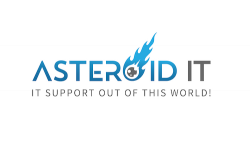
When business owners in Arizona think about upgrading technology, one of the biggest decisions they face is whether to stay on-premises or move to the cloud. It sounds like a simple choice: cloud equals modern, on-premises equals outdated. In reality, the right decision depends on your business size, industry, compliance needs, and even where your office is located.
Many small and mid-sized businesses in the Valley rush into cloud migrations without understanding the tradeoffs. Others stay on legacy servers far longer than they should. Let’s look at what most people do not know about cloud vs on-premises IT and how to choose what truly fits your business.
1. The Cloud Is Not Always Cheaper
Cloud pricing models sound attractive at first: no big hardware purchase, predictable monthly fees, and pay-for-what-you-use scalability. But hidden costs can sneak up fast. Cloud vendors charge egress fees (data leaving their network), and storing backups across regions adds more cost. If you have databases or CAD files that sync constantly, those small charges can snowball. Over three years, some companies end up spending more than a comparable on-premises setup.
2. Internet Outages Still Mean Downtime
Cloud services rely completely on internet connectivity. If your office in Gilbert or Queen Creek loses service, employees can’t access files, email, or key applications — even if the cloud provider’s infrastructure is running perfectly. During Arizona’s monsoon storms or regional outages, this can bring work to a halt. Businesses with hybrid environments (local servers for critical data, cloud for collaboration) often see the best of both worlds.
3. Compliance Requirements Might Limit You
Healthcare practices, CPA firms, and manufacturers that handle DoD contracts all have to meet strict data security frameworks like HIPAA, FTC Safeguards Rule, and CMMC. These frameworks often require that you know exactly where your data lives and who controls access. Cloud vendors may replicate data in multiple states — or even outside the U.S. — without clear visibility. This can create compliance gaps that go unnoticed until audit time.
4. Performance Depends on More Than Bandwidth
Cloud storage and applications work great for lightweight office tasks but can struggle with database-intensive or latency-sensitive workloads. Manufacturing software, accounting systems, or line-of-business apps that talk back and forth thousands of times per minute can run slower in the cloud. On-prem servers often outperform cloud equivalents for these tasks, especially when located near end users.
5. You Can Get Stuck in the Cloud
Few business owners realize how hard it is to exit once everything lives in a cloud provider’s ecosystem. Migrating data out can take weeks, and egress fees make it expensive. Some businesses discover this only after deciding to switch vendors or bring workloads back on-premises. Having an exit plan before moving ensures you stay in control of your own data.
6. Security Responsibility Is Still Yours
Cloud providers secure their infrastructure, but you are responsible for securing your accounts, passwords, and configurations. Misconfigured access controls and weak MFA policies are a leading cause of breaches. It’s a “shared responsibility” model — one many small businesses misunderstand until it’s too late.
7. The Hybrid Advantage
A hybrid approach combines on-prem control with cloud flexibility. Sensitive files, backups, or compliance data can stay local, while collaboration and productivity tools (like Microsoft 365 or Teams) run in the cloud. This model provides business continuity even during internet outages, especially when paired with solutions like our Virtual Technician, which keeps local systems running securely and syncs once connectivity is restored.
8. The Hidden Risk of Vendor Lock-In
Every cloud provider has unique tools and storage formats. Once your data is uploaded and your workflows rely on their platform, moving away becomes difficult and costly. Businesses that plan migrations carefully, with open standards and data portability in mind, can avoid being trapped.
9. Environmental Costs Are Different, Not Gone
Cloud marketing often emphasizes “green computing,” but power consumption doesn’t disappear — it just shifts. Arizona businesses that maintain local servers must handle cooling and power efficiency, while cloud providers use massive data centers that also have environmental footprints. Understanding these tradeoffs can influence sustainability goals and long-term strategy.
10. How to Decide What’s Right for You
Start with a Cloud Readiness Assessment. Evaluate which systems are compliance-sensitive, which depend on low latency, and which benefit most from scalability. From there, build a plan that mixes both environments where appropriate. Many of our clients in Phoenix, Mesa, and Flagstaff choose a hybrid model for resilience and cost balance.
How Asteroid IT Helps
We help Arizona businesses plan and implement the right IT architecture, including:
- Cloud Readiness Audits and cost modeling
- Hybrid deployments with local and cloud redundancy
- Compliance mapping for HIPAA, CMMC, and FTC Safeguards Rule
- Backup and disaster recovery design
- Virtual Technician monitoring that maintains uptime during outages
Make the Right Move, Not Just the Popular One
Moving to the cloud can transform how you work but only if you do it strategically. Before you migrate everything, know the risks, costs, and compliance impacts. Schedule a free Cloud Readiness Assessment today and see what option truly fits your business.
Get My Free Cloud Readiness Assessment →
